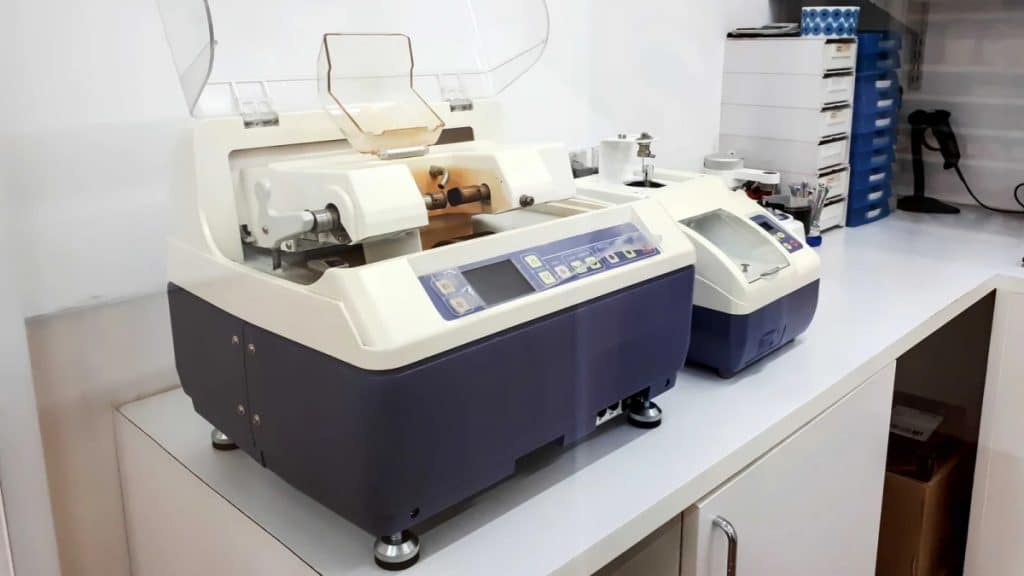Lens edging, also called glazing or finishing, is a vital step in producing eyeglasses. It’s the process of cutting prescription lenses so they fit in a specific set of frames. If you’ve never been involved in producing eyeglasses, you may be surprised to learn all lenses are round with a 70mm diameter until they’ve been finished by edging. While many optometrists have relied on large wholesale labs to complete this step in the past, many are now choosing to do it in-house as it allows them to more efficiently provide a higher level of care.
If you’re considering adding lens finishing to your practice or store, this guide will cover all the basics for the most important piece of equipment: the lens edging machine. You’ll learn what these machines are, how they can benefit your practice, and how to choose the best machine for your needs.
What are Lens Edger Machines?
As mentioned above, prescription lenses are sent by the manufacturer as 70mm diameter circles, so it’s up to the finisher to shape them to fit the intended frames comfortably and securely. Lens edger machines are pieces of equipment that cut the lens to size using air or water jets, sanding wheels, and polishers to achieve the necessary fit.
Currently, there are three types of systems on the market:
- Manual edgers are controlled entirely by the user, so the cutting tools have to be moved and adjusted by hand.
- Automatic edgers adjust and move automatically according to inputs from the user. They are more precise and faster than manual edgers.
- Semi-automatic edgers require a person to adjust the system’s tools but then move the cutting tools automatically according to the user’s inputs. Semi-automatic systems are slower and less precise than automatic edgers, but are faster and offer better accuracy than manual edgers.
Benefits of Adding a Lens Edger to Your Clinic
Adding lens edger machines to your clinic has several benefits for your clinic as well as your patients.
- More accurate and precise edging, particularly with automatic or semi-automatic edgers. Using a machine will ensure you finish lenses exactly as you need them.
- Adding an edger to your clinic allows you to work much more efficiently. Plus, the improvements in precision mean you can lower costs through reduced waste.
- Offer customization for your patients so you can better meet each person’s specific needs. The ability to fit lenses to any type of frame lets you offer your patients any frames they might want.
- You and your staff can spend more time on more important tasks, such as actually caring for your patients.
- Deliver perfectly fitted lenses quickly to Increase patient satisfaction. Happy patients are repeat patients. They may even refer future patients.
How to Choose the Best Machine
When shopping for a lens edger, there are several factors you need to consider. The first is its reliability and efficiency; a slow edger that frequently breaks will cost you money in the long run. It also needs to be able to finish bifocals, single-vision, and transition lenses. Your edger needs to be highly accurate to avoid wasted time and materials. Finally, choose an edger that’s equipped with the latest technology. The latest models can grind lenses very quickly and accurately with little input from humans.
If you’ve been wondering if a lens edging machine is a good investment for your clinic, the answer is that it is. Incorporating one of these machines will save you time and money while leading to increased patient satisfaction. Combining these two outcomes usually leads to better profits for your clinic.
